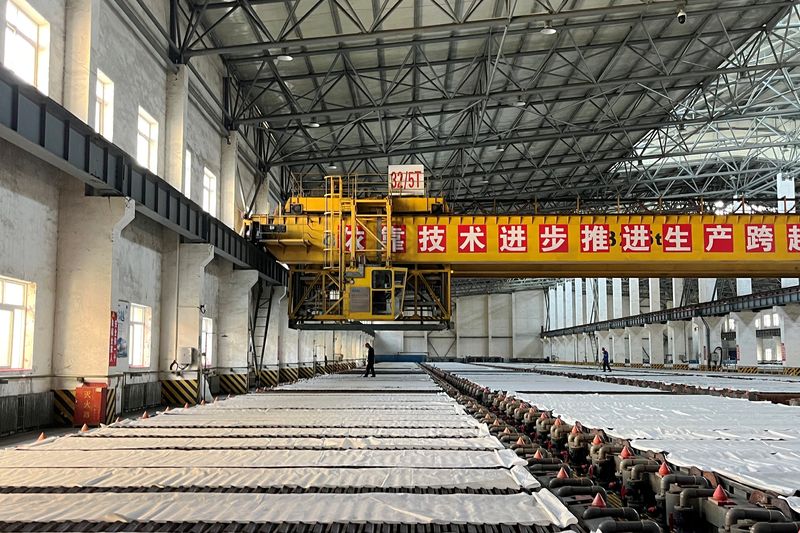
By Clyde Russell
LAUNCESTON, Australia (Reuters) – Western and Chinese investors had different reactions to the latest stimulus pronouncements by Beijing, and it’s likely that both groups are somewhat missing the point.
At what was a highly anticipated press conference on Saturday, the Ministry of Finance said it was ready to significantly boost spending, but didn’t put a yuan figure to its thinking.
It appears that Western investors were disappointed that they didn’t get an amount, while their Chinese counterparts took the view that Beijing remains determined to lift the world’s second-largest economy out of its growth funk.
The divergence can be seen in the price moves in early Monday trade in copper, the key industrial metal used in construction and manufacturing.
Shanghai copper futures opened higher, gaining as much as 0.5% to a high of 77,700 yuan ($10,990) a metric ton on Monday.
Their London counterparts moved the opposite way in early trade, dropping as much as 1.1% to $9,683 a ton.
While not massive moves, they do show that China’s investors seemed prepared to give the benefit of the doubt to Beijing on coming stimulus, while Western investors need to be convinced that enough will be done.
It’s worth looking at the detail of what was announced at the weekend, with three of the four measures aimed at easing the financial burden of local governments, the bodies responsible for some 80% of all government spending.
In effect, what Beijing is proposing is to refinance the mountains of local government debt, and by doing so allow these authorities to take out new loans and use the money to kick-start construction and infrastructure projects.
Fixing the ailing property sector is the key to re-energising the Chinese economy, as this will boost consumer sentiment while increasing physical demand for commodities, especially steel and copper, but also refined fuels such as diesel.
CHAIN PRICE GAINS
Shanghai steel rebar futures responded positively to the weekend news, rising as much as 2.2% in early trade on Monday to 3,531 yuan a ton.
Dalian Commodity Exchange iron ore contracts jumped as much as 3.2% to an intraday high of 810 yuan, but Singapore Exchange (OTC:SPXCY) futures were up a much more restrained 1.4% at $107.90.
Dalian iron ore futures have gained about 23% since the low of 658 yuan a ton on Sept. 23, which was prior to the start of the latest round of stimulus measures.
In contrast, Singapore Exchange contracts, which are more traded by investors outside of China, have risen by a more modest 16.5%.
In some ways the gains are hard to justify on a fundamental basis, as the China stimulus measures are unlikely to result in a significant increase in demand for the key steel raw material.
It’s unlikely that China’s steel mills will boost production in the final quarter of 2024, given weak margins and still soft demand for steel.
Even if Beijing’s stimulus measures do prove the antidote to the struggling property sector, it’s more likely that demand will only increase in the first half of 2025.
There are also substantial risks for China’s economy that are largely beyond Beijing’s control, such as a global trade war should Donald Trump be successful in his bid to win the U.S. presidential elections next month.
What is clear is that China’s stimulus package is incomplete, and thus the rallies in the prices of some commodities on the country’s local exchanges remain largely sentiment-driven.
But it also appears that China’s leaders are stepping up the rhetoric and getting closer to promising to do whatever it takes to fire up the economy.

The trick for them will be to deliver stimulus that will deliver both real world success through increased activity, as well as winning over still cautious investors.
The opinions expressed here are those of the author, a columnist for Reuters.
This post is originally published on INVESTING.


